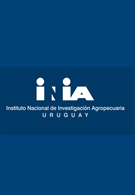The devastating damage caused by Teratosphaeria nubilosa in plantations of Eucalyptus globulus is forcing the replacement of this species in Uruguay. As there is no local availability of resistant genotypes, INIA reoriented its Tree Breeding Plan to the specific aim of developing clones with good performance against this disease. Genetic variation in disease resistance (% defoliation) and precocity of phase change (% of adult foliage) at 14 and 21 months of age was analyzed in five progeny tests (comprising 87 full-sib families) naturally infected by T. nubilosa in Southeastern Uruguay. The narrow-sense individual tree heritability for disease severity was low or moderate (0.05 at 14 months and 0.15 at 21 months) and was moderate to high (0.21 at 14 months and 0.38 at 21 months) for precocity of phase change. The genotype x environment interaction for disease severity and precocity of phase change was moderate at 14 months (Type B rg = 0.56 and 0.67, respectively) and low at 21 months (Type B rg = 0.90 and 0.86, respectively). Based on these parameters, the main selection criterion currently used, both in the selection of parents for controlled pollination and candidates for cloning, is the proportion of adult foliage at 21 months. Currently, the capture and multiplication of clones is underway, both from intraspecific crosses and from interspecific crosses with E. grandis, and the incorporation of Genomic Selection is in process through the development and validation of selection models for the characteristics of interest.

